Bavaria Cruiser 46
This German-built cruiser, with its blend of fresh thinking and solid engineering, can take a family to new horizons
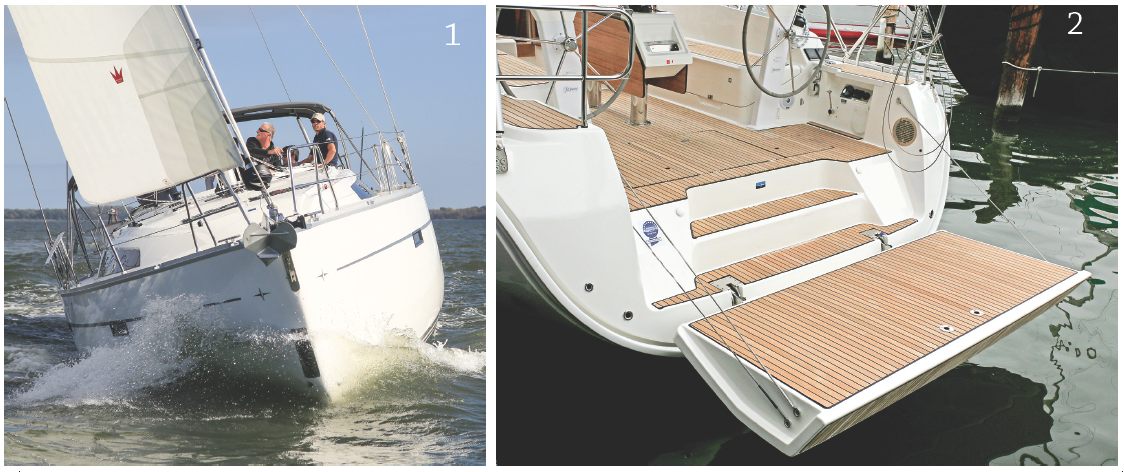
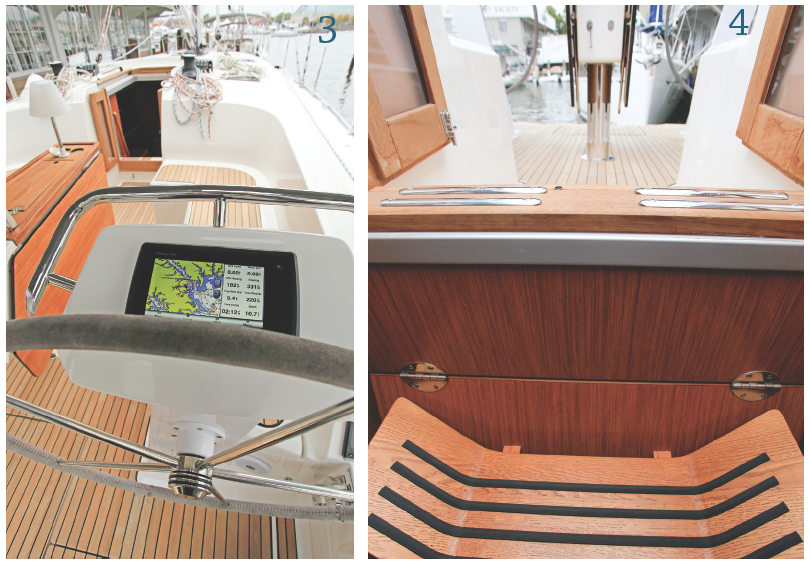
On deck
The cockpit is smartly designed with twin wheels, a large twin-leaf table, comfortably angled seat backs and plenty of storage. The view from both helms is superb and I like the clever lift-up foot supports that help keep you balanced when steering upwind but can be folded away at the dock to avoid toe stubbing. Sailing and navigational instruments can either be mounted at the aft end of the table—the usual spot, but not all that easy to view—or in pods at either pedestal. There are two shallow cockpit lockers and a huge lazarette that can house both a rolledup dinghy and liferaft. The
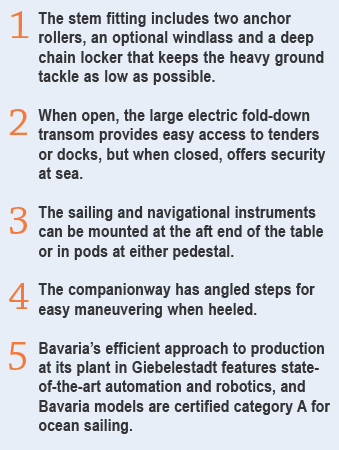
handsome teak table with a deep locker in the middle is robust and acts as solid support when moving about the cockpit.
The deck profile is low, including nine flush-mounted hatches, and navigating fore and aft while underway feels secure and natural. The stanchions are stout and tall enough to be useful. Although the molded nonskid provides good traction I couldn’t help thinking that the teak side deck option would make the boat look stunning. It’s no surprise that the boat in Bavaria’s promotional video has teak decks. While the sheets are led aft to the primary winches, all other sail controls are led to the aft end of the coachroof. A series of clutches on the port side is the focal point. The mainsheet is interesting, designed without a traveler, and instead employing a triangle rig with two separate tackles in lieu of the more common German-style system controlling the main. The standard Lewmar Evo 50sT primary sheet winches are a tad on the small side. Electric winches are a popular option. The Selden spar features twin, swept spreaders and a 7/8-fractional rig. A Selden vang and Furlex headsail furling are both standard.
Deck hardware is robust, although I think I’d opt for the upgraded stainless cleats. The stemhead fitting includes two anchor rollers and the chain locker is deep, stowing the ground tackle where it belongs, as low as possible. The windlass is a necessary option.
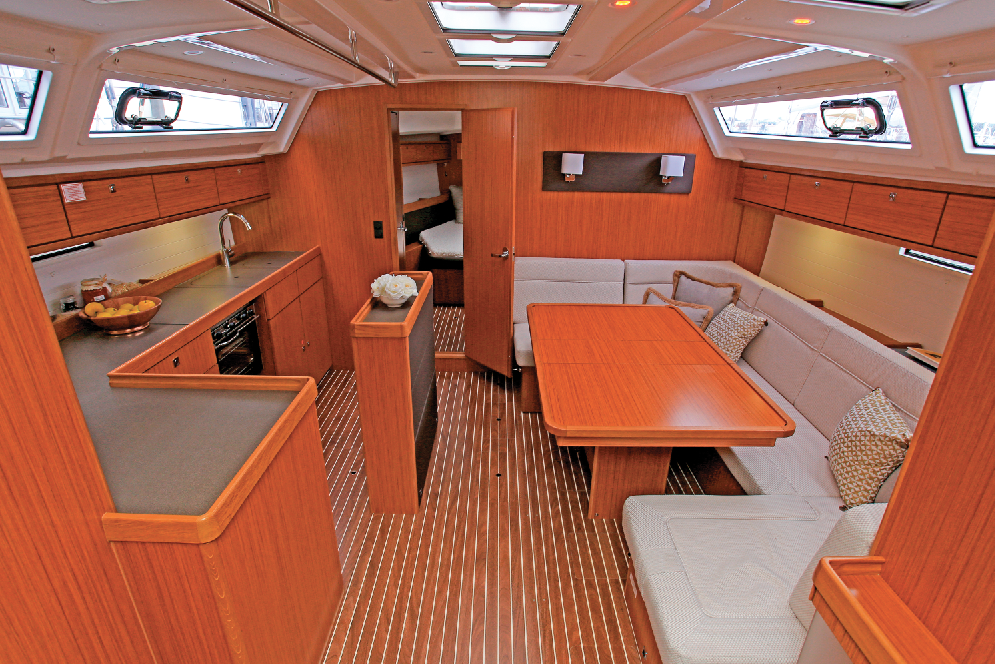
Down below After quick adjustments to both leech lines and repositioning the genoa leads, the 46 found its stride. I was impressed how stiff the boat was as we made our way upwind. Footing along at just less than 7 knots, heel was minimal and the ride was strikingly smooth despite blustery conditions. I was pleased to note that the hull didn’t pound, an important feature in a cruising boat.
The standard interior features three cabins and three heads. A four-cabin layout is an option and will undoubtedly be available in charter fleets around the globe. I was immediately impressed by the light and ventilation in the saloon. In spite of a low profile, there is a lot of headroom—a full 6 feet 9 inches in the saloon—and it adds to the sense of spaciousness below. The standard wood trim is mahogany but teak and oak are also available. The joinerwork is precise.
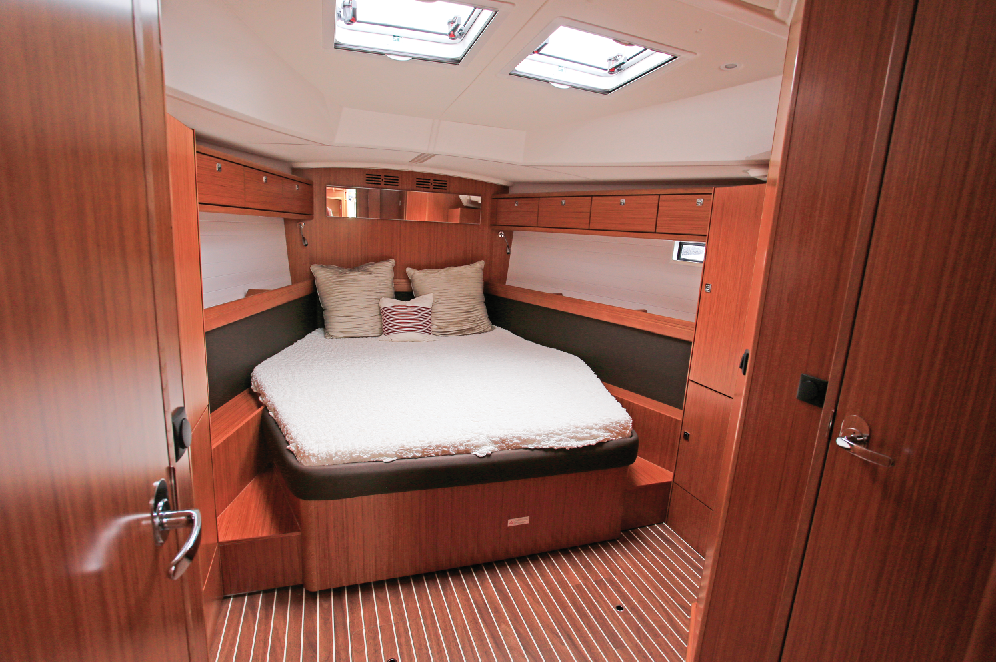
The standard plan includes an in-line galley to port with a double burner stove and oven, twin sinks and top- and front-loading refrigeration. What makes the galley work is the saloon island that gives the cook something to lean against on port tack. The island has a slick foldaway seat as well. The saloon includes a wraparound settee to starboard with enough room to seat six comfortably. While there’s not an abundance of storage, there are lockers above the galley, below the counters and above and below the settees.
The owner’s stateroom forward is huge. There is an island-style double berth, lots of storage, a bureau and hanging locker and a separate head and shower stall across from each other. The two aft cabins each include a large double berth, hanging locker and en suite head. The boat is ideally suited for a cruising family.
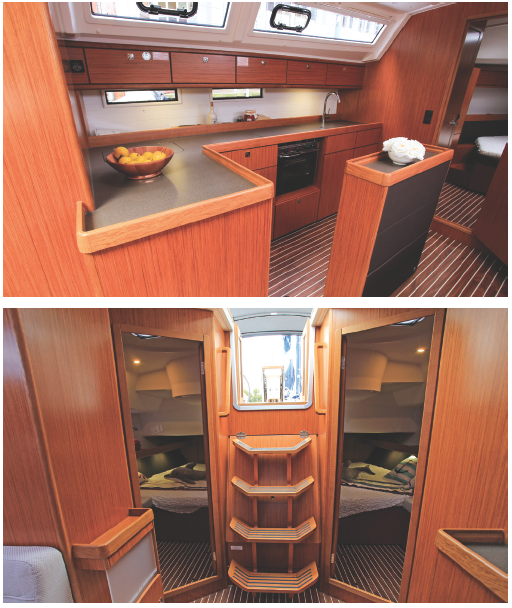
The systems on the Cruiser 46 are designed for serious sailing and have the potential for long-range cruising. The batteries are AGM, with three house batteries and a dedicated starting circuit. The lighting is all LED. The water capacity is 95 gallons and fuel is 56 gallons. A watermaker is a worthwhile option. The diesel is a Volvo Penta 55-horsepower with a saildrive. Access to the engine room is excellent. Although we motored only briefly to rendezvous with the photo boat, the acceleration was impressive.
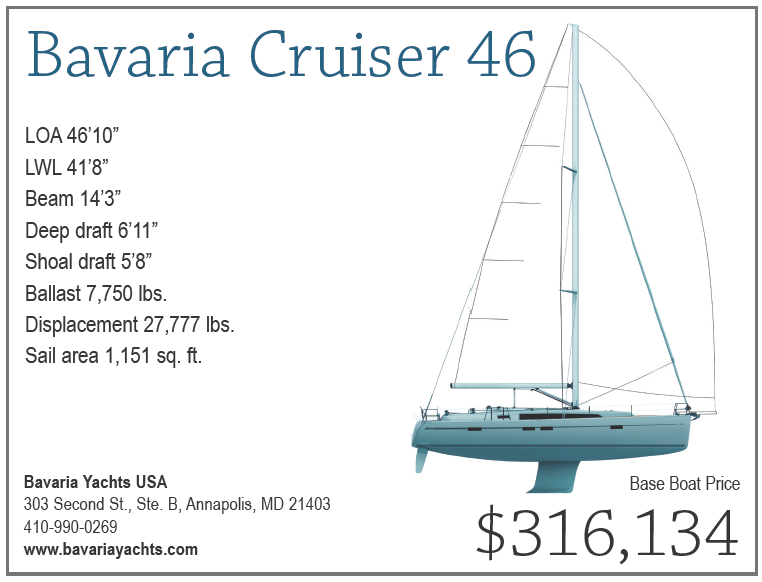
Back in the cockpit, I took the helm as we eased the sheets. Close reaching we eased over 7 knots and then pushing the wind a bit farther aft, flirted with 8. We probably could have used a reef but the boat still felt balanced and completely under control. The helm was light and very responsive. We were sailing with Kenny Feld, the managing director of Bavaria Yachts USA. A successful entrepreneur, he told us that what drew him to become involved with Bavaria was the company’s commitment to product development and engineering.
“We are going to keep building better and better boats, so I know we’ll be successful,” he said.
The new Bavaria Cruiser 46 proves his point.

Comments